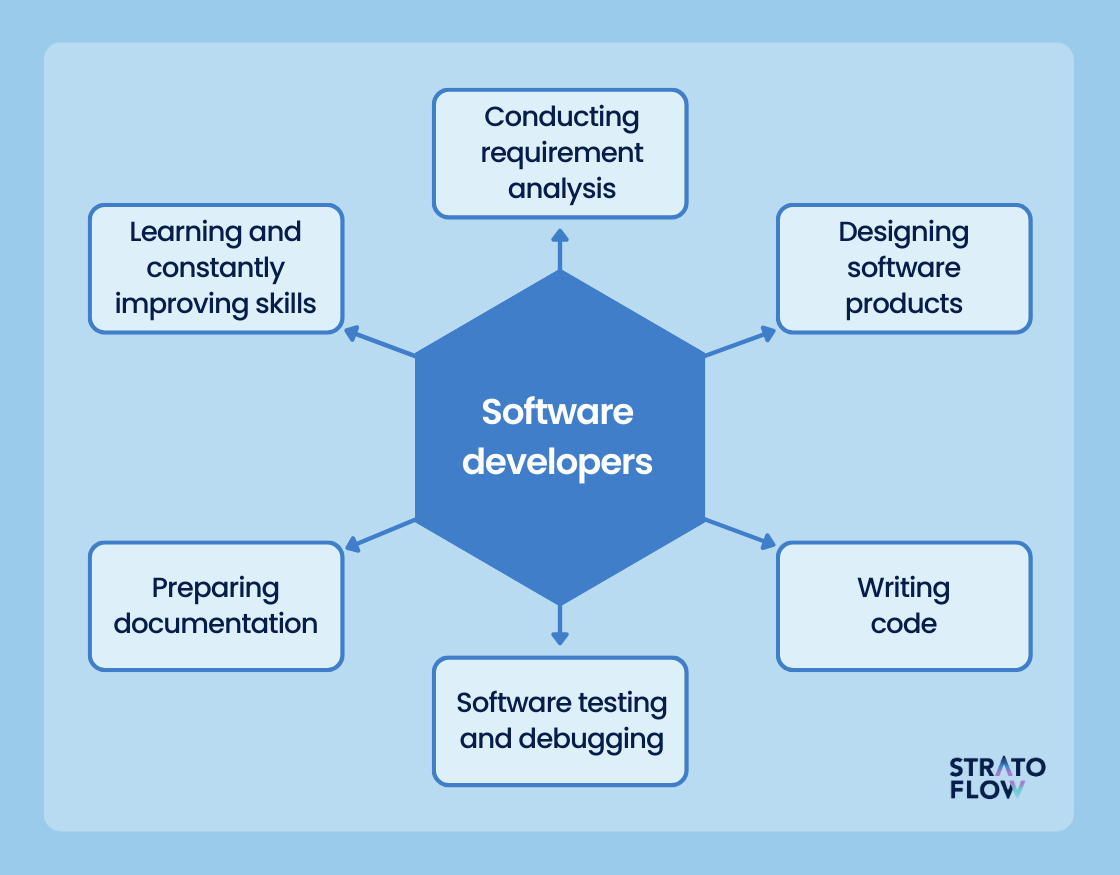Optimize Your Resources with Specialist Software Engineering Staffing Solutions
Optimize Your Resources with Specialist Software Engineering Staffing Solutions
Blog Article
Devoted Developers vs. In-House Teams: Which Is Right for You?
The decision between utilizing devoted designers and maintaining an in-house group is a significant one that can influence the trajectory of your tasks and total service method. Devoted developers offer a degree of adaptability and customized experience that can be beneficial for certain, short-term campaigns. Conversely, internal groups add to a cohesive business society and a nuanced understanding of lasting objectives. By taking a look at critical elements such as budget plan, task extent, and desired control, you can better figure out which strategy straightens with your organizational needs. The effects of this choice extend beyond immediate outcomes-- think about the wider effect on your service landscape.
Comprehending Devoted Designers
The growing demand for specialized abilities in the technology market has led to the emergence of committed programmers as a feasible service for numerous companies. These specialists are commonly gotten on a job basis, allowing firms to utilize particular know-how without the long-lasting dedication connected with full-time hires. Committed designers are frequently ingrained within a client's group, supplying flexibility and scalability to satisfy project needs.
This version allows companies to access a global ability pool, which is specifically beneficial in a swiftly developing technical landscape. Dedicated programmers can be sourced from various geographical areas, guaranteeing that firms can find the appropriate ability at competitive rates. They usually bring a riches of experience and understanding, having actually worked with varied tasks across different sectors.
Furthermore, specialized developers can focus specifically on the jobs at hand, improving performance and efficiency. They are furnished to incorporate seamlessly into existing process, teaming up closely with in-house teams to accomplish task purposes. This approach not only minimizes the worry of recruitment and training but likewise permits organizations to remain active, adapting promptly to changing market needs and technical developments.
Advantages of In-House Teams

Moreover, internal teams often tend to have a much deeper understanding of the company's goal, values, and goals. This placement can boost employee interaction and inspiration, as staff member really feel more linked to their job and the organization's success. In addition, having a specialized in-house group permits much better placement of techniques and objectives, as these members are continually concentrated on the firm's priorities.
In-house groups also promote quicker decision-making processes, as they can respond extra quickly to adjustments and challenges. The well established relationships and experience with firm protocols enable streamlined operations and reduced miscommunication. Eventually, the mix of a cohesive society, placement with organizational goals, and reliable communication makes internal groups a view it now useful possession for lots of organizations, particularly those seeking to cultivate lasting growth and technology.
Expense Factors To Consider
When evaluating price considerations, both specialized programmers and in-house teams existing distinctive monetary implications for organizations. Engaging specialized programmers typically involves a pay-per-project or hourly rate model, which can be affordable for companies with varying job demands. This method permits flexibility in scaling resources up or down, ensuring that companies just spend for the solutions they need.
In contrast, in-house groups require taken care of expenses, including salaries, advantages, and overhead expenditures such as workplace and equipment. While this model supplies greater control and instant schedule of resources, it may result in greater long-lasting expenditures, specifically if the workload does not validate a permanent personnel.
Additionally, companies need to take into consideration the covert costs related to employment and training of in-house staff members, which can additionally stress spending plans. In some instances, the moment and resources invested in managing an in-house team can interfere with the company's core service purposes.

Task Monitoring and Versatility
Job management and versatility are crucial variables that affect the option between dedicated programmers and in-house groups. Devoted groups usually have actually developed processes for handling tasks efficiently, leveraging details approaches like Agile or Scrum, which promote repetitive progression and adaptability.

Inevitably, the selection in between committed programmers and internal groups depends upon the desired degree of versatility and the certain job administration requirements. Companies must evaluate their functional characteristics, job complexity, and resource schedule to figure out which option lines up finest with their this hyperlink calculated goals.
Making the Right Choice
Picking the right advancement strategy-- devoted programmers or internal teams-- requires a cautious evaluation of numerous aspects that straighten with a company's calculated goals. On the other hand, internal groups can offer far better connection and integration with existing workers.
Following, evaluate your budget. Dedicated designers often offer an affordable option for temporary jobs, while in-house teams may incur higher lasting expenses as a result of salaries, benefits, and expenses prices. Analyze the degree of control and cooperation preferred; internal groups commonly foster stronger communication and placement with firm ecommerce web design and development culture.
Furthermore, consider the moment framework. If instant outcomes are essential, dedicated developers can be onboarded rapidly, whereas building an internal group takes some time for recruitment and training. Consider the long-lasting vision of your organization. If continuous growth is important, purchasing an internal group may produce far better returns in time. Inevitably, the decision depends upon a detailed evaluation of these aspects, making sure positioning with your company's functional requirements and overall purposes.
Final Thought
In conclusion, the decision in between dedicated designers and in-house groups depends upon job needs and business objectives. Devoted programmers provide versatility and specific expertise, making them suitable for short-term efforts. Alternatively, internal teams cultivate a cohesive society and much deeper placement with long-lasting objectives. Mindful evaluation of budget plan restrictions, task timelines, and wanted control degrees is essential for determining the most suitable technique, ensuring alignment with strategic top priorities and functional performance.
The choice in between using specialized designers and preserving an in-house group is a substantial one that can influence the trajectory of your jobs and overall company technique.Project monitoring and versatility are vital elements that influence the selection in between specialized developers and internal groups. software engineering staffing.In contrast, in-house teams might excel in keeping a constant task administration framework due to their experience with the organization's culture and lasting goals. Committed designers frequently offer a cost-efficient service for temporary jobs, while internal groups might sustain higher long-lasting expenditures due to incomes, benefits, and overhead prices.In conclusion, the decision in between committed developers and internal teams hinges on task needs and business goals
Report this page